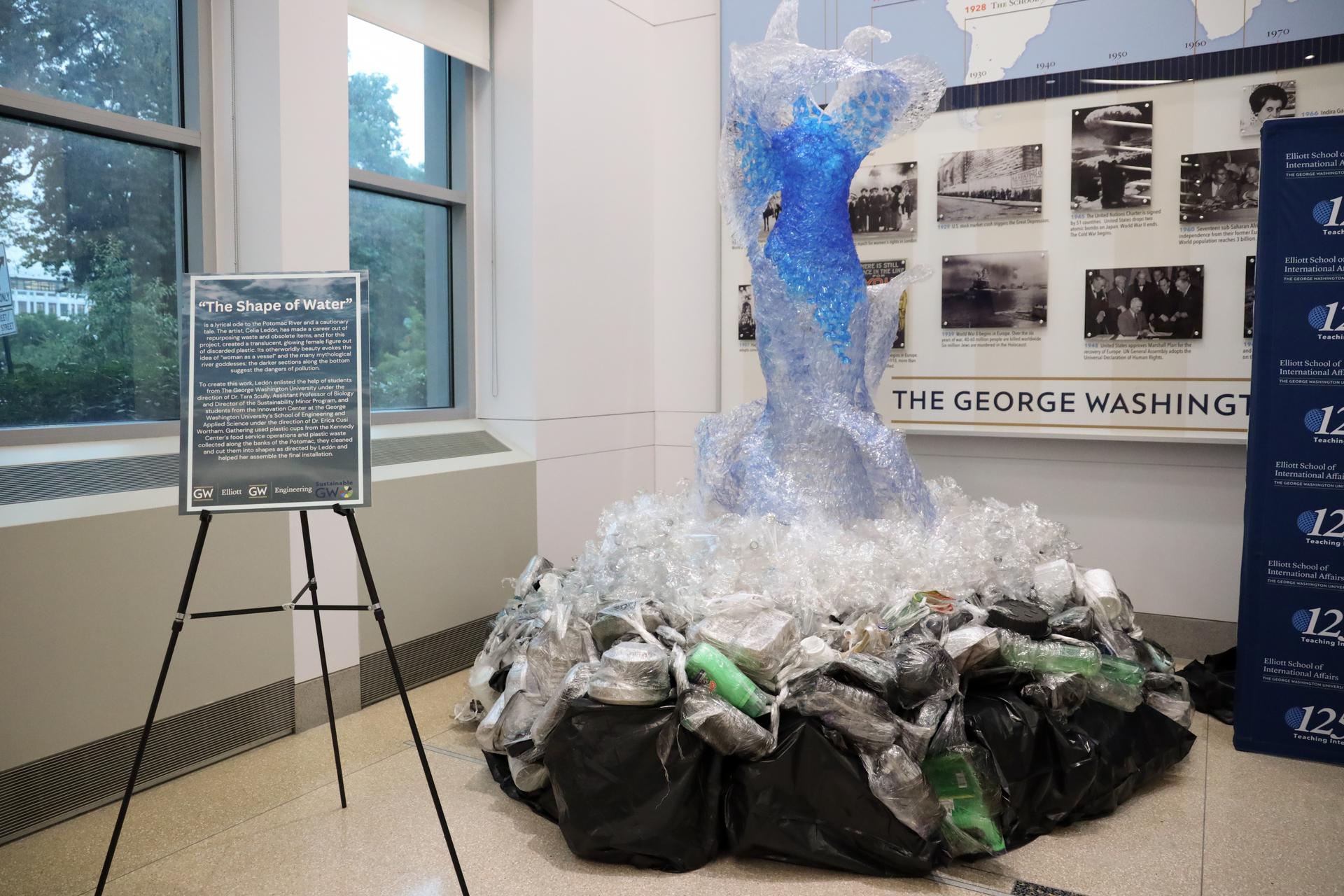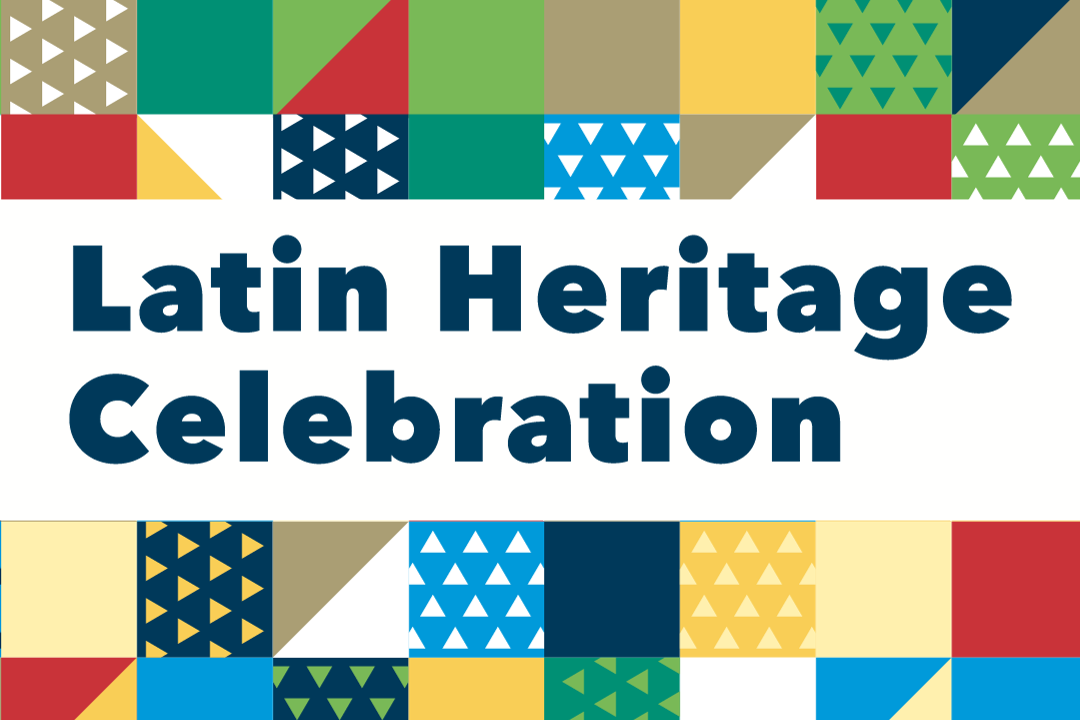Next time you pass through the George Washington University’s Elliott School of International Affairs, pause a moment to take in the new resident standing several meters tall in the western end of the entrance hall. The swirling, translucent female form, something between a blue-gowned ghost and a breaking wave, is artist Celia Ledón’s “The Shape of Water.” Evocative of river goddesses from many traditions, the piece is both an ode to the Potomac River and a cautionary comment on pollution and climate change.
Perhaps most remarkably, she was created entirely from reclaimed plastic waste from the Washington, D.C., area. “The Shape of Water” was made by Ledón and GW students for the Kennedy Center’s 2023 RiverRun arts, nature impact Festival. The project for RiverRun was a collaboration between the Kennedy Center’s International Programming Department and REACH Office Hours Residency Program.
In an event at the Elliott School Tuesday, Ledón joined a panel to help situate “The Shape of Water” in a tradition of Latinx art and activism around the pressing issue of climate change. The discussion emphasized the importance of community and interdisciplinary teamwork in pushing that fight forward.
“One of my main strategies when I want to do a project is community engagement—working with students and communities and neighbors is the most important thing,” Ledón said. “When people get involved with waste collection, they see the amount of waste collected in the final piece and actually work for it, it’s a very powerful thing.”
The panel was moderated by Erica Cusi Wortham, director of the GW Innovation Center in the School of Engineering and Applied Science, whose students—alongside those of Tara Scully, assistant professor of biology in the Columbian College of Arts and Sciences and director of GW’s sustainability minor—collected and assembled materials for “The Shape of Water.” Joining Ledón and Wortham were panelists Maria del Carmen Montoya, associate professor of sculpture and spatial practices in the Corcoran School of the Arts and Design, and Robert Orttung, research professor of international affairs in the Elliott School and director of research for Sustainable GW.
During the 2022 fall and 2023 spring semesters, Wortham, Scully and their students pulled refuse out of trash cans, dredged plastic from the river and interceded to grab empty disposable champagne flutes from well-heeled Kennedy Center guests instead of letting them go in the bin. Afterward, they cleaned their finds and heated them into shape under Ledón’s direction. Wortham said the process gave all the participants a new perspective on their own patterns of waste. By continuing to engage in those patterns of collection and reuse, she said, the Innovation Center has now become zero-waste.
“There’s a kind of tactile learning that comes from being involved in the process,” Wortham said. “It stays with you.”
Ledón agreed, saying much of the intended impact of “The Shape of Water” comes from the process of its creation as well as the end result. Participants’ heightened awareness of human impact on our ecosystems is “the true call to action,” she said.
“Anyone, artist or not, can take waste and make something beautiful out of it,” she said. But making beautiful things is “not actually what it's all about…it’s about having more self-awareness around climate change and environmental issues.”
Panelists also touched on the theme of GW’s 2023 Latinx Heritage Celebration, “Ritmos y Raíces,”—“rhythms and roots”—which Ledón and Montoya both said particularly resonated with them as women, artists and activists of Latinx heritage.
As a professor, Montoya said, she loves to teach from “a space of awe”—opening her students’ eyes to the immensity of the world around them.
“Raíces speaks to me about being rooted in a place and a land that we care for, that has cared back for us, and ritmos reminds me that there are cycles to the environment,” Montoya said. “For millennia, indigenous peoples in this land have celebrated the natural rhythms and cycles of the earth.” Arts collectives like Las Imaginistas “are as artists speaking back to us these traditions that…promote environmental stewardship.”
Orttung encouraged students to take a cue from socially active artists by engaging with structures of power, particularly by voting and getting involved in electoral politics.
“The policies of the country are the most important thing—much more so than individual practices,” he said.



